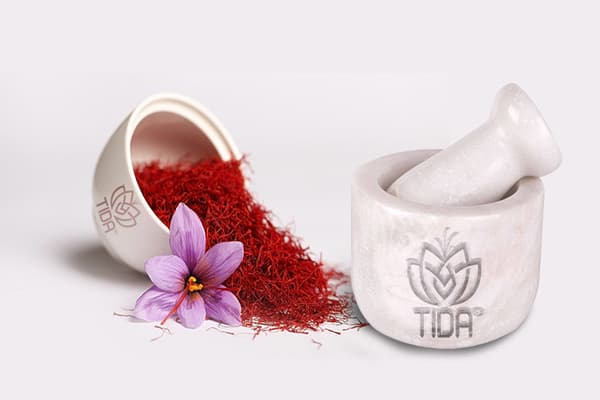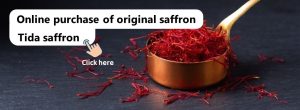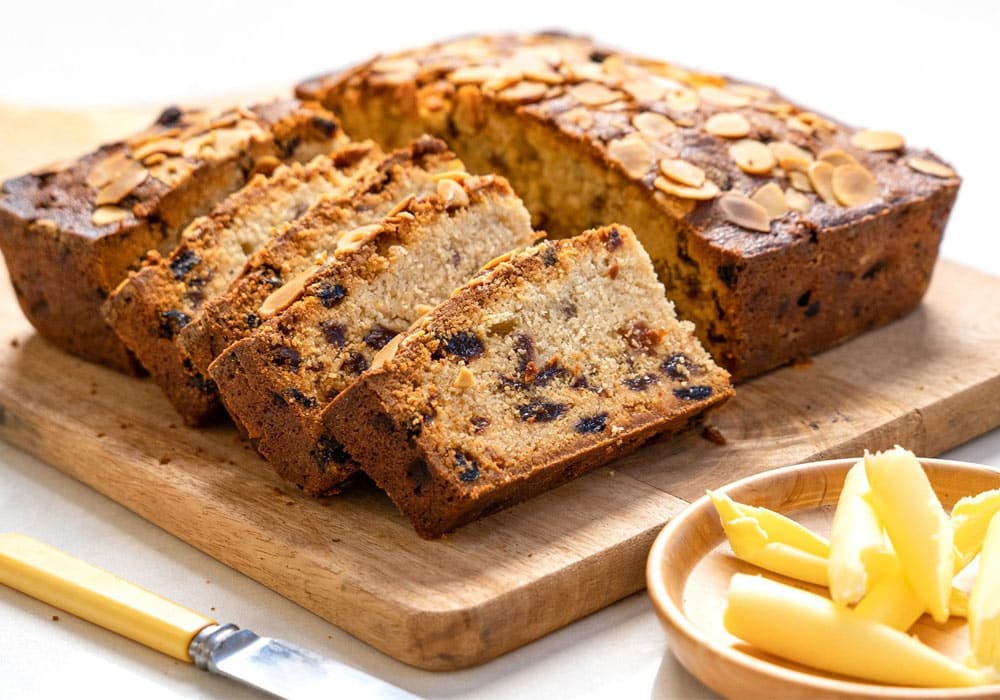In this article, we explain how to grind saffron and change it to saffron powder for use in food and drink, etc.
Using saffron in all kinds of food requires grinding it first in order to take advantage of its color, aroma, taste, nutrients, and properties. Since saffron has a slightly bitter taste, it is ground with sugar to make it easier to grind and to change its taste.

Per person, a quarter of a teaspoon of saffron should be added to food. The preparation of original saffron makes the food taste delicious. Originally, the saffron strings were uniform in size and shape, bitter tasting, trumpet-shaped on one side, and sharp and ivy-shaped on the other.
During the grinding process, saffron needs to be preserved in order to maintain its properties. Hence, before we discuss different ways of grinding saffron, we should observe a few points before getting started.
Several important points to keep in mind when grinding saffron.
✓ Make sure your saffron is dry before grinding it. It’s enough to put dry saffron in the oven or on a low gas flame if you don’t have dry saffron available. Keep saffron away from extreme temperatures.
✓ Grinding saffron should be performed in a dry container. A saffron spice can become difficult to grind if it absorbs moisture quickly.
✓ In addition to grinding speed, other factors must also be considered. It is possible to burn saffron when it is ground too quickly and hastily. This is very important, so do not ignore it.
✓ Another important point to remember when grinding saffron is not to grind it all at once. The properties of ground saffron are lost very quickly as soon as it is ground. Depending on the amount of saffron you need, powder it before using.
➡ For more information about the properties of saffron, refer to the article Benefits of saffron.
4 methods of grinding saffron

There are different ways to grind saffron.
1. Grinding saffron with a spoon
The saffron you bought should not be opened if it is packed. Put a spoon on the bag and slide the edge of the spoon on the bag Do this until the saffron is completely powdered.
2. How to grind saffron with a mortar
Saffron should be ground in a mortar that is suitable for grinding saffron. For grinding saffron, stone and wooden mortars are good options.
Gently shake the mortar head until the saffron is completely ground in the mortar.
3. Grinding saffron with sugar
You can prevent your saffron powder from burning by grinding it with sugar in a mortar.
Sugar is added to saffron to speed up the powdering process. In other words, if you just bought a package of dry saffron and you’re hosting a ceremony in a few hours, grind the saffron with sugar.
4. Grinding saffron with a coffee grinder
Another quick and easy method for grinding saffron is to use this method. A coffee grinder is sufficient for grinding saffron. There is no need to concern yourself with the brand or model of the device.
Brewing saffron
Brewing saffron with boiling water
This method has been used in Iran since ancient times. The advantages of this method are that the coloring of saffron happens very quickly and does not take much time.
In this method, we put ground saffron in a container and add boiling water to it. About a teaspoon of saffron is suitable for half a cup of boiling water. Then, we put the container in and place it on indirect heat on the samovar, kettle, or on stove and give the saffron 20 minutes to release its color well.
Brewing saffron with ice
This method is one of the modern methods of brewing saffron. The color of saffron is more in this method, but the time that saffron needs for coloring is also more.
In this method, put well-powdered saffron in a container, then put some ice cubes on it and wait until it melts well at room temperature.
A teaspoon of saffron powder and two pieces of ice are suitable.
The effect of saffron powder on health:
The effect of saffron powder on health:
Saffron powder has several potential health benefits thanks to its rich composition of antioxidants and bioactive compounds. Let’s break it down!
Boosts Mental Health
- Mood Enhancer: Saffron contains crocin and safranal, which may help boost serotonin levels, potentially reducing symptoms of depression and anxiety.
- Memory and Cognition: It’s been studied for its neuroprotective properties, which could help improve memory and reduce the risk of cognitive decline.
Supports Heart Health
- Antioxidant Power: The antioxidants in saffron help combat oxidative stress, which can protect heart cells and reduce inflammation.
- Blood Pressure Regulation: Saffron may promote better blood circulation and help lower blood pressure.
Anti-Inflammatory & Anticancer Potential
- Fights Inflammation: Compounds like crocetin have anti-inflammatory effects, which may help manage chronic conditions.
- Potential Cancer-Fighting Properties: Some studies suggest saffron compounds might inhibit the growth of cancer cells, though more research is needed.
Eye Health
- Retinal Protection: Saffron may support eye health by protecting photoreceptor cells, potentially slowing the progression of age-related macular degeneration (AMD).
Digestive & Immune Health
- Gut Health: Saffron may support digestion and reduce bloating.
- Immune Support: Its antioxidant properties may strengthen the immune system and help the body fight infections.
How to distinguish real saffron powder from fake
Distinguishing real saffron powder from fake or adulterated saffron can be tricky, but there are several methods you can use to identify genuine saffron. Here’s how to tell the difference:
1. Color Test
- Real Saffron: Genuine saffron powder has a rich, vibrant reddish-gold color. The powder should be a deep, warm red, not yellow or orange.
- Fake Saffron: Artificial or fake saffron may have a dull yellow or pale orange color, which could indicate that it’s been mixed with turmeric or other cheaper coloring agents.
2. Smell Test
- Real Saffron: Authentic saffron has a distinct, strong, and slightly sweet aroma. When you smell it, you should be able to detect a rich fragrance that is slightly floral and earthy.
- Fake Saffron: If the saffron powder smells bland, like dust, or has no noticeable fragrance, it is likely adulterated or artificial.
3. Water Test
- Real Saffron: When saffron threads or powder are added to warm water, they will slowly release their color, turning the liquid a golden or reddish hue. The water will remain clear, and the saffron will not dissolve.
- Fake Saffron: If you add fake saffron to water, the color will likely bleed out rapidly, and the water may appear cloudy or murky, indicating artificial coloring has been added.
4. Taste Test
- Real Saffron: Saffron has a slightly bitter, floral, and earthy flavor that’s hard to describe but distinct. If you taste it raw, it may also have a mild sweetness.
- Fake Saffron: Adulterated saffron may have an artificial or metallic taste and might not offer the same flavor depth as real saffron.
5. Texture Test
- Real Saffron: Authentic saffron threads are delicate, thin, and slightly brittle to the touch. The strands are usually slightly curved and break easily when rubbed.
- Fake Saffron: Fake saffron may be in powdered form or in the shape of longer, stiff threads, sometimes resembling threads of red dye or synthetic fibers.
6. Price Check
- Real Saffron: True saffron is expensive because it requires a large number of flowers to produce a small quantity. If saffron is very cheap, it’s probably not genuine.
- Fake Saffron: If the price seems too good to be true, it probably is. Low-cost saffron may indicate that the product is fake or mixed with other substances.
7. Source and Seller
- Reputable Sellers: Buy saffron from trusted sources, preferably from regions known for saffron cultivation, such as Iran, Spain, or India. Reputable brands or organic markets usually sell authentic saffron.
- Certifications: Look for products that offer certifications of authenticity or have a high customer review rating.
Saffron powder pricing and market:
The pricing of saffron powder can vary significantly based on several factors, including quality, origin, and market conditions. Below is an overview of saffron pricing and the factors influencing it in the global market:
Factors Affecting Saffron Powder Pricing:
-
Quality of Saffron
- Premium Quality: The highest quality saffron comes from the red stigmas of the crocus flower, which are carefully handpicked. These saffron strands have a vibrant red color and an intense aroma. The finer the quality, the higher the price.
- Lower Quality: Saffron with yellow or orange threads (from the stamens or mixed with other substances) will generally be cheaper. The quality is assessed based on characteristics like color, aroma, and moisture content.
-
Origin
- Iran: Iran is the world’s largest producer of saffron, contributing to about 90% of the global supply. Iranian saffron is highly regarded for its quality and is often one of the more expensive varieties on the market.
- Spain: Spanish saffron, particularly varieties like La Mancha, is known for its unique flavor and color. It is usually priced slightly higher than saffron from other countries.
- India (Kashmir): Kashmiri saffron is highly prized for its quality, especially the variety from the Pampore region. However, due to its limited production, it can be very expensive.
-
Harvest Year
- Fresh Harvest: Fresh saffron is typically more expensive. The price can fluctuate based on the yield in a given season and the availability of high-quality threads.
- Older Stock: Saffron that has been stored for longer periods may be cheaper, but the quality (flavor, color, and aroma) can diminish over time.
-
Packaging and Processing
- Saffron in its powdered form is generally more expensive than whole threads because the grinding process reduces the weight and increases the cost per gram. However, some prefer the powder due to its convenience in cooking.
-
Market Demand and Supply
- Global Demand: Saffron is in demand across various sectors, including the food, cosmetics, and pharmaceutical industries. This demand often drives up prices.
- Supply Chain Disruptions: Saffron’s delicate harvesting process and the high labor costs involved also influence its price. Any disruptions, such as political instability in saffron-producing regions or global trade issues, can cause fluctuations in prices.
Price Range of Saffron Powder (2025 Estimates):
- Low Quality (Mixed/Adulterated): $2 – $5 per gram
- Mid-range Quality (Regular Grade): $6 – $15 per gram
- High Quality (Premium, Pure Saffron): $15 – $30 per gram
- Top-Grade Saffron (Luxury or Rare Varieties): $30 and above per gram
For comparison:
- 1 gram of top-grade saffron can be equivalent to around 200 threads.
- Saffron is typically sold in small quantities, such as 0.5g, 1g, or 5g packages, due to its high price and concentrated flavor.
Market Trends and Future Outlook:
- Increasing Global Demand: As consumers become more aware of saffron’s health benefits, its demand is expected to rise, especially in the wellness and cosmetic sectors.
- Sustainability and Organic Saffron: There is a growing trend toward organic and sustainably sourced saffron, which may lead to higher prices but also increased availability of ethically sourced saffron in the market.
- E-commerce and Online Sales: Online markets have made saffron more accessible, and sellers often provide a wide range of prices, allowing consumers to compare and find products that fit their budget.
The effect of storage conditions on the quality of saffron powder:
The quality of saffron powder can significantly be affected by its storage conditions. Saffron is a delicate spice, and improper storage can lead to a loss of flavor, color, and aroma, ultimately reducing its quality. Here’s how different storage conditions influence saffron:
1. Temperature:
- Ideal Temperature: The best temperature to store saffron is cool (around 15-20°C or 59-68°F). This temperature range helps preserve the volatile compounds (such as safranal) that contribute to saffron’s distinct aroma.
- High Temperatures: Storing saffron in hot temperatures or near heat sources (like stoves, ovens, or direct sunlight) can cause the spice to degrade faster. High temperatures can cause saffron to lose its essential oils, resulting in a weaker aroma and flavor.
- Low Temperatures: While very low temperatures (freezing) can prevent degradation, they might cause moisture condensation when the saffron is brought to room temperature. This could lead to mold growth, especially if the saffron isn’t sealed properly.
2. Humidity:
- Ideal Humidity: The best humidity for saffron storage is low to moderate. Too much moisture in the environment can result in saffron absorbing water, which can cause mold growth or spoilage.
- Excessive Moisture: Humidity levels above 60-70% can be detrimental, especially in climates where there’s a lot of moisture in the air. If saffron becomes damp, its flavor and aroma will be compromised, and it may lose its color. This can also make the saffron clump together, making it difficult to use.
- Dry Conditions: If saffron is exposed to very dry conditions (with low humidity), it may dry out too much and lose its flavor and aroma. Therefore, it’s essential to store saffron in an airtight container to maintain its balance.
3. Light Exposure:
- Ideal Light Conditions: Saffron should be stored away from direct light. UV light can break down the delicate compounds in saffron, particularly crocin (the compound responsible for its color), which leads to fading and a loss of potency.
- Dark Storage: Store saffron in dark or opaque containers to protect it from light. Ideally, saffron should be kept in dark glass jars or airtight tins.
4. Oxygen and Air Exposure:
- Sealed Containers: The spice is very sensitive to oxygen. Exposure to air for prolonged periods can cause saffron to lose its essential oils, resulting in a decline in flavor and aroma. Always store saffron in airtight containers to minimize air exposure.
- Vacuum Sealing: For long-term storage, vacuum sealing saffron or using a container with a tight seal can extend its shelf life, keeping the spice fresher for a longer period.
5. Container Type:
- Glass Jars or Tins: Saffron should be kept in containers that protect it from moisture, air, and light. Glass jars or opaque tins are ideal, as they prevent contamination while maintaining the flavor and aroma of the spice.
- Avoid Plastic: Avoid storing saffron in plastic containers for long periods because plastic may absorb moisture and odors that can alter saffron’s natural qualities.
- Avoid Paper Packaging: Paper bags or unsealed packaging should be avoided for saffron storage, as they allow light and air to reach the spice.
6. Shelf Life:
- Short-Term Storage (Up to 1 Year): If saffron is stored under optimal conditions (airtight container, cool, dry, and dark), it can last up to 1 year without losing significant quality.
- Long-Term Storage (1-3 Years): With careful storage, saffron can last up to 2-3 years. However, over time, even in perfect conditions, saffron’s potency will begin to diminish, so it is best to use it within this period.
7. Signs of Spoiled Saffron:
- Faded Color: If saffron loses its vibrant red color and turns pale yellow or brown, it has likely been stored improperly.
- Faint or No Aroma: Saffron’s signature aroma should be strong and floral. If it has no fragrance, it may have been exposed to light, heat, or air for too long.
- Clumping or Mold: Any signs of clumping or mold growth indicate that the saffron has absorbed moisture and is no longer safe to use.
Comparison of saffron powder with other spices:
Saffron powder is often considered one of the most luxurious and expensive spices in the world. When compared to other common spices, saffron stands out due to its unique flavor, color, and aroma, but it also differs in terms of cost, uses, and nutritional benefits. Here’s a comparison of saffron powder with several other popular spices:
1. Saffron vs. Turmeric
-
Flavor & Aroma:
- Saffron: Saffron has a distinct, delicate, and slightly floral flavor with a bitter-sweet note and an earthy, aromatic scent.
- Turmeric: Turmeric has a warm, slightly bitter flavor with a mild mustard-like taste and an earthy aroma.
-
Uses:
- Saffron: Typically used in luxurious dishes like paella, biryani, risotto, and various desserts. It’s also used for coloring and flavoring soups, sauces, and drinks.
- Turmeric: Commonly used in curries, soups, rice dishes, and as a coloring agent in mustard and processed foods.
-
Cost:
- Saffron: Saffron is very expensive due to its labor-intensive harvesting process. It is priced much higher than turmeric.
- Turmeric: Turmeric is much more affordable and readily available in most kitchens.
-
Health Benefits:
- Saffron: Known for its antioxidant properties, saffron can help improve mood, reduce inflammation, and support heart health.
- Turmeric: Contains curcumin, which has powerful anti-inflammatory and antioxidant properties, supporting joint health, immune function, and overall wellness.
2. Saffron vs. Cinnamon
-
Flavor & Aroma:
- Saffron: Saffron has a subtle, sweet, and floral flavor that is gentle yet impactful.
- Cinnamon: Cinnamon has a strong, sweet, and spicy flavor, with a warm and slightly woody aroma.
-
Uses:
- Saffron: Primarily used in both sweet and savory dishes, including rice dishes, desserts, and some beverages.
- Cinnamon: Used in baked goods (like cinnamon rolls), stews, curries, and sweet dishes like pies and cakes. It’s also common in hot drinks such as chai and apple cider.
-
Cost:
- Saffron: Significantly more expensive than cinnamon due to its scarcity and labor-intensive harvesting process.
- Cinnamon: Very affordable and readily available.
-
Health Benefits:
- Saffron: Helps with mood enhancement, anti-inflammatory effects, and may support brain health.
- Cinnamon: Known for its ability to help regulate blood sugar levels, improve heart health, and fight infections.
3. Saffron vs. Cardamom
-
Flavor & Aroma:
- Saffron: Offers a delicate, floral, and slightly sweet flavor that’s often described as luxurious.
- Cardamom: Has a bold, aromatic, slightly sweet, and spicy flavor, with a hint of citrus.
-
Uses:
- Saffron: Typically used in savory rice dishes, stews, and some desserts, especially in Middle Eastern, Indian, and Mediterranean cuisines.
- Cardamom: Used in both sweet and savory dishes, including Indian curries, desserts like cakes and cookies, chai tea, and Scandinavian pastries.
-
Cost:
- Saffron: Much more expensive than cardamom due to the labor-intensive production process of saffron.
- Cardamom: While cardamom is pricey compared to other spices, it is still generally more affordable than saffron.
-
Health Benefits:
- Saffron: May reduce depression, support heart health, and improve cognitive function.
- Cardamom: Known for its digestive benefits, cardamom is often used to relieve indigestion, reduce bloating, and freshen breath. It also has antioxidant properties.
4. Saffron vs. Cloves
-
Flavor & Aroma:
- Saffron: Saffron has a floral, sweet, and slightly bitter flavor profile with a fragrant aroma.
- Cloves: Cloves have a strong, warm, and slightly sweet flavor with a hint of bitterness and a very aromatic, spicy scent.
-
Uses:
- Saffron: Saffron is used in savory rice dishes, pilafs, risottos, soups, sauces, and some desserts and drinks.
- Cloves: Used in spice blends, stews, meats, baked goods, and beverages like mulled wine and chai. Cloves are also common in pickling.
-
Cost:
- Saffron: Saffron is much more expensive than cloves due to its rarity and labor-intensive harvesting.
- Cloves: Cloves are affordable and widely available.
-
Health Benefits:
- Saffron: Supports mood enhancement, heart health, and cognitive function.
- Cloves: Cloves are rich in antioxidants and have antimicrobial properties. They are often used for their ability to ease toothaches, promote digestion, and support respiratory health.
5. Saffron vs. Ginger
-
Flavor & Aroma:
- Saffron: Saffron offers a subtle, aromatic, and slightly sweet flavor with floral notes.
- Ginger: Ginger has a pungent, spicy, and slightly sweet flavor with a strong, invigorating aroma.
-
Uses:
- Saffron: Used in rice dishes, risottos, stews, soups, and some sweet treats like ice cream, cakes, or desserts.
- Ginger: Commonly used in stir-fries, curries, teas, and baked goods. It’s also used in syrups and marinades.
-
Cost:
- Saffron: More expensive than ginger due to the lengthy harvesting process and limited supply.
- Ginger: Affordable and widely available, both fresh and dried.
-
Health Benefits:
- Saffron: Known for its mood-boosting, anti-inflammatory, and cognitive benefits.
- Ginger: Ginger has digestive benefits, relieves nausea, and helps reduce inflammation and muscle pain.
Where can we buy good Saffron?
To buy high-quality saffron, you can visit Tida Saffron Company. This company is one of the most reputable saffron producers and suppliers and offers quality and authentic products to its customers.
Tida Silk Road Trading Trade is here to deliver it’s best services for supplying and exporting Iranian Saffron, herbs, nuts, fresh fruits and vegetables to all importers from all over the world.
Why Tida Saffron?
- Guaranteed Quality: Tida Silk Road Trading Saffron procures its saffron from the best farms in Khorasan and maintains the quality and aroma of saffron using modern processing methods.
- Product Variety: The company offers different types of saffron, including Sargol Saffron, Super Negin Saffron, and Pushal saffron and Saffron Powder and saffron rock candy in various packaging.
- Product Authenticity: Tida Saffron guarantees the authenticity of its products and offers its saffron with standard and authenticity certificates.
- Easy to Buy: You can buy Tida Saffron saffron through reputable stores and also online from the company’s website.
- Credibility and History: Tida Saffron Company has a long and illustrious history in the field of saffron production and supply.
How to buy saffron from Tida?
buy high-quality dried fruit products from Tida Saffron .For information on saffron price, please visit contact us page or Order Onlie.







